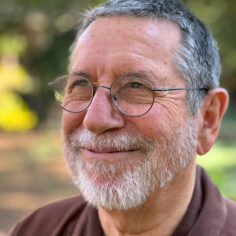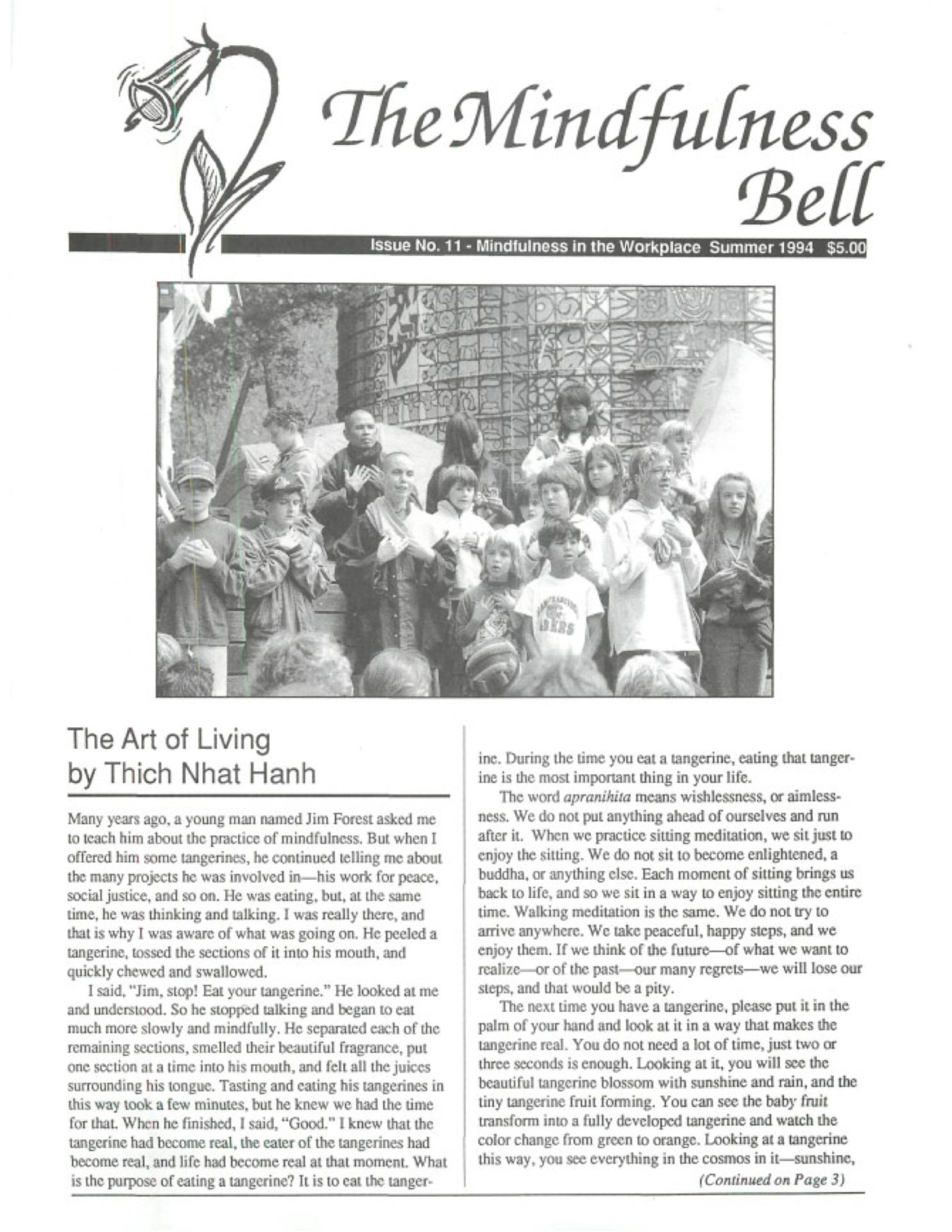By Mitchell Ratner in June 1994
I have found that my ability to work mindfully is directly related to the arrangement of my furniture and tools.
Two years ago during a stay at Plum Village, I talked to Sister Jina about how to stretch and loosen up leg muscles to make sitting at work more comfortable. She mentioned that nothing really worked for her until she took the furniture out of her house.
By Mitchell Ratner in June 1994
I have found that my ability to work mindfully is directly related to the arrangement of my furniture and tools.
Two years ago during a stay at Plum Village, I talked to Sister Jina about how to stretch and loosen up leg muscles to make sitting at work more comfortable. She mentioned that nothing really worked for her until she took the furniture out of her house. When I went home I shortened the legs of my desk. Now I spend much of my day sitting on a meditation cushion with a large kidney-shaped desk, 16 inches above the floor, in front of me. On the desk are my computer keyboard, monitor, printer, and telephone, as well as miscellaneous office supplies. Just off the desk are the fax machine, reference books, file cabinets, and book cases. Now I read, write, edit, and talk on the phone while comfortably sitting in a way that closely resembles my regular meditation position. The change has made long periods of formal sitting much easier, and it also facilitates moving into contemplative moments. When things seem rushed, when I'm stuck working something out, when I feel uncentered, it feels quite natural to just fold my hands, close my eyes, and go back to my breathing.
Stephen Covey, in his book The Seven Habits of Highly Effective People, observes that most of us spend most of our lives doing things that seem urgent but are not very important. For me, urgency is often defined by others, or by my projections onto others. I attribute urgency to a phone call or an activity, because I think someone else believes it to be urgent. Often, I participate unreflectively in relationships and institutions that are continuously charged with urgency, and because of this pressure, I lose my mindfulness. I give up my own sense of the speed or the care with which something needs to be done and attempt to do it more quickly, and usually not as well.
A glimpse of how ingrained and automatic my other-directed sense of urgency can be came to me during one of Thay's retreats. After one of the mid-Dharma talk stretch periods, I held the microphone for Thay as he got ready to continue his talk. As he was calmly putting it back on, I felt a sense of urgency — with 300 people waiting, there was a need to get things done quickly. For Thay, putting the microphone on was every bit as important, and he allowed it to take all the time he felt it deserved. Later I marveled at his ability to self-define what was and wasn't urgent and also, at how much I had learned in those two seconds.


